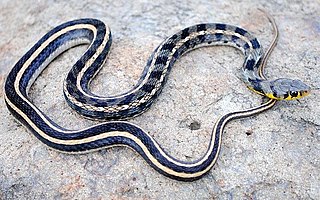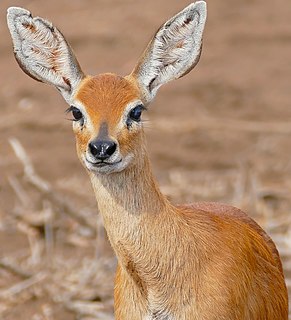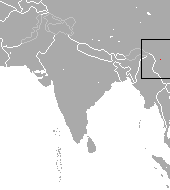Related Research Articles

The Integrated Taxonomic Information System (ITIS) is an American partnership of federal agencies designed to provide consistent and reliable information on the taxonomy of biological species. ITIS was originally formed in 1996 as an interagency group within the US federal government, involving several US federal agencies, and has now become an international body, with Canadian and Mexican government agencies participating. The database draws from a large community of taxonomic experts. Primary content staff are housed at the Smithsonian National Museum of Natural History and IT services are provided by a US Geological Survey facility in Denver. The primary focus of ITIS is North American species, but many biological groups exist worldwide and ITIS collaborates with other agencies to increase its global coverage.

Amphiesma is a genus of snakes in the family Colubridae. They are found across Asia.

Raphicerus is a genus of small antelopes of the tribe Neotragini.

The North African gerbil is a species of rodent in the family Muridae. It is found in North Africa where its natural habitats are arable land and rocky areas of the Maghreb, and hot Saharan deserts.

The long-tailed mole is a species of mole in the family Talpidae. It is found in China, Vietnam and Myanmar.

The yellow-bellied weasel is a species of weasel that inhabits pine forests in central and eastern Asia.
Erich Martin Hering was a German entomologist who specialised in leafmining insects, He was a curator in the Museum für Naturkunde in Berlin, where his collections of Lepidoptera, Coleoptera, Hymenoptera, Diptera are conserved. His collections of Agromyzidae are shared between MfN and the Agricultural School at Portici now part of the University of Naples Federico II.

The pygmy brown-toothed shrew is a species of shrew in the order Eulipotyphla. It is distributed in China. C. parva was initially thought to be the same as Chodsigoa lamula, but it was found to be a separate species.

The Valais shrew is a species of mammal in the family Soricidae.
Pollex is a genus of moths of the family Erebidae erected by Michael Fibiger in 2007.
Hyocephalidae are a small family of Heteroptera which are endemic to Australia.

Copelatus glyphicus is a species of diving beetle. It is part of the genus Copelatus in the subfamily Copelatinae of the family Dytiscidae. It was described by Say in 1823.

Proscopiidae is a family of Neotropical grasshoppers, now placed in its own superfamily, the Proscopioidea. Some species may be known as stick grasshoppers or jumping sticks.

Isocrinidae is one of four extant families of crinoids in the order Isocrinida.
Odorrana indeprensa is a true frog species in the family Ranidae, described first by Bain and Stuart 2006.

Dasineura is a genus of midges in the family Cecidomyiidae, some of which cause galls on plants such as Dasineura crataegi on hawthorn and Dasineura fraxinea on ash.

Panulirus femoristriga is a species of spiny lobster. It occurs in the Indian and Pacific Oceans. IUCN categorizes the species globally as of "least concern". No subspecies are listed in the Catalog of Life.

Panulirus gracilis, the green spiny lobster, is a crustacean species described by Thomas Hale Streets 1871. Panulirus gracilis is part of the genus Panulirus and the Palinuridae family. IUCN categorizes the species globally as insufficiently studied. No subspecies are listed in the Catalog of Life.

Panulirus inflatus, the blue spiny lobster, is a species of crustacean in the family Palinuridae. It is found at rocky reefs to depths of 30 m (100 ft) in the Pacific Ocean off Mexico, ranging from Baja California to Chiapas. It is commonly caught in artisanal fisheries, but the species is not threatened, being categorized as least concern by the IUCN. There are no subspecies.
Atyoida is a genus of freshwater shrimp in the family Atyidae. There are four species in the genus, each endemic to a different island group. The type species, Atyoida bisulcata, is endemic to Hawaiʻi and described by John Witt Randall in 1840.
References
- ↑ Bisby F.A., Roskov Y.R., Orrell T.M., Nicolson D., Paglinawan L.E., Bailly N., Kirk P.M., Bourgoin T., Baillargeon G., Ouvrard D. (red.) (2011). "Species 2000 & ITIS Catalogue of Life: 2011 Annual Checklist". Species 2000: Reading, UK. Retrieved 5 June 2012.
{{cite web}}: CS1 maint: multiple names: authors list (link) - ↑ "ITIS Standard Report Page: Molophilus pollex". www.itis.gov. Retrieved 28 January 2020.